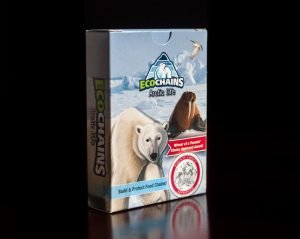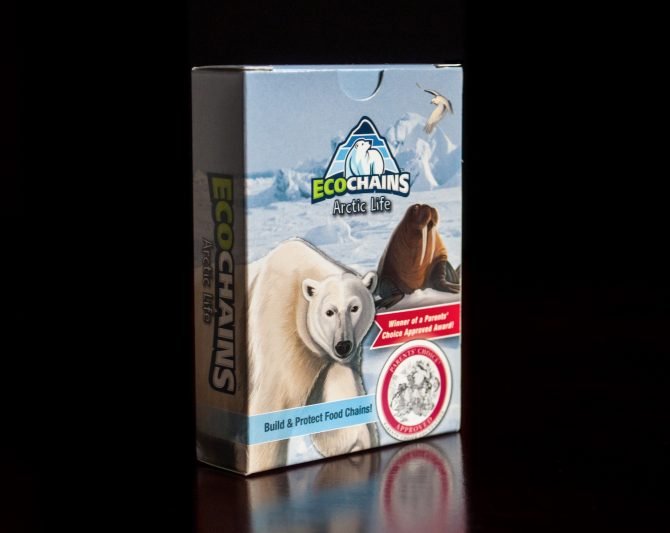Social science research shows that teaching climate change in way that emphasizes “doom and gloom” and scary facts does not motivate people to engage in the issue, and often leads to feelings of helplessness, fear, or guilt (CUSP, 2017). Facts alone are often not enough to get people to learn or care about the issue.
The Need for New Ways to Teach Climate Change
Can a game be an effective way to get a person to develop empathy, learn about, or shift attitudes through a firsthand experience? A review of interactive media tools by published in Nature Climate Change journal found that games can be a promising approach to teach, persuade or change attitudes on the climate change and caring for the environment.
EcoChains: A Food Web Game to Teach Climate Change
EcoChains is a food web card game to teach climate change. Developed by Joey Lee (game designer and educational technology professor at Columbia University) and Stephanie Pfirman (environmental science professor at Barnard College), the game is meant to be fun and work both in classrooms and at home for game night.
EcoChains: Arctic Life is a simple two player game that involves 3 main steps:
- Build food chains by connecting Arctic species cards at the corners — predators eat prey. For example, polar bear can eat ringed seals.
- Ensure animals have enough sea ice at the base of their food chains to survive. Polar bears, for instance, need 3 sea ice cards at the bottom of their food chain.
- Carbon pollution events melt sea ice, which sometimes causes migration and death. These cards randomly come out as events which affect all players.

Here is a video that explains the game.
The two player version of the card game, EcoChains: Arctic Life, is available now for about $9 at Amazon.



